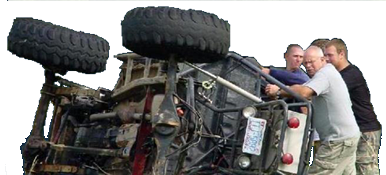For all practical purposes the numbers really don't mean shit. All of that math goes out the window as soon as you pull up on an obstacle because it's all based on forces acting on the suspension when level. Having a basic understanding of what's going on and how things "should" be setup is going to be more beneficial than anything at this point. In other words...simply knowing you should triangulate them to a certain point and have some degree of separation at the axle and frame will get you in the ballpark.
When you're putting down a couple hundred horsepower, going fast, jumping, competing, etc. then you can start analyzing the numbers as close as possible. For the time being just put them where they fit taking into consideration the basic principles and roll with it.
That's not accurate.
Yes too little or too much AS will cause wheel hop.
The instant you pull up on an obstacle, vertical waterfall style climb for example,
You suspension moves towards the "droop" position as the pitch changes but gravity direction stays constant.
This puts less weight on springs and more on the links themselves. Rear traction moves toward 100% and front moves toward 0%. This is in terms of traction split, not actual traction.
Depending on the calculator you are using, is whether your AS value is accurate.
Flat ground, 4wd, torque and traction are split 50/50.
Older calcs represent AS in. RWD only.
The newest calc has a box for split front vs rear.
My point to all this is, you must take that into account when applying how the calculator numbers will affect the suspension characteristics in real life.
I shoot for rear numbers to not exceed 80% in droop, in 2wd. This way on climbs, typically in places I don't want to have a break due to wheel hop, the AS isn't excessively high.
It's definitely all a compromise to fit your design and chassis constraints.
It's a blend of AS change, pinion change, driveshaft plunge, roll center height etc.
To me, the ability to climb hard obstacles is the most important design aspect.
If racing endurance/ultra4 I'd be more concerned with pinion angle change and less with AS increase, to keep the joints alive, to finish a race, and sacrifice potentially having to pull cable on steep climbs.
If desert racing, I would be more concerned with pinion change and driveshaft plunge and getting the instant center low and forward to put more forces through the shocks where they can be absorbed, vs straight to the chassis.
Mud bog, drag racing, etc all have different ideal setups.
Set it up the best you can, to what fits your chassis constraints for the intended usage you are wanting to wheel.
To apply the principles of vehicle dynamics to offroad use, takes some creativity. Acceleration and braking are the same. Cornering is the same force as off camber situations. The only difference is with pitch, which changes the traction split and suspension position.

